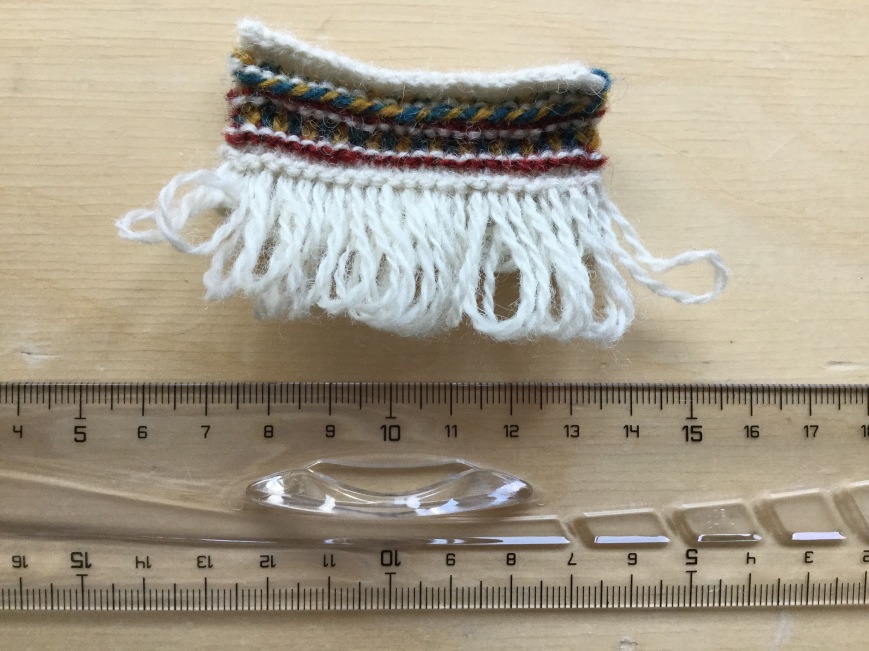Estonian Craft Camp 2016
Readers may remember that I went to this in 2015 and posted about it here:
and here:
You can see the wristlet I made here:
I enjoyed myself so much that the only doubt I had about returning was that it could be as good again. In the end I decided to take the chance and signed up for Craft Camp 2016, the third one.
You can read about the organisation and aims of the camp here:
The Estonian Government takes the promotion of ‘folk crafts’ seriously and they are taught at university level, for instance at the Vilanjdi Culture Academy.
The camp, for me, is a perfect combination of activities, location and people, and the language is English, which makes it possible, as I don’t speak any of the languages heard there – Estonian, Swedish, Norwegian, Finnish, German, Dutch ….
The activities I chose this year were all textiles:
Fringed wedding gloves,
Techniques used in knitted garments in Saaremaa, an Estonian island,
Mugli embroidery, and
Saaremaa and Kihnu knitting bags
There are descriptions of the workshops here:
The fringed gloves workshop was taught by Kristi Joeste, author of Ornamented Journey, probably the most attractive knitting book I know. Fringes on gloves are said to protect against the evil eye and in this capacity they were worn for weddings. The fringes can be knitted in or sewn: this workshop did the latter. Kristi had studied three examples from the Estonian Museum collection and we knitted small pieces of these, flat rather than in the round, to have a base on which to sew the fringes. These samples incorporated purl ridges onto which the fringes are sewn and some two colour work. Here are the materials (note the 1.25mm dpns) and one of my samples:


The next was Archaistic embroidery from the Mulgi region, taught by Liina Laaneoja and Annika Vaalma, see here for more information.
The teachers of this workshop are graduates of the Viljandi Culture Academy and have a business making garments decorated with embroidery. We were given the materials to make a game of noughts and crosses using a felt base and 9 small felt squares which were to be embroidered using the following traditional motifs: circle, cross, tree of life and rose. These are worked in only 3 stitches: blanket stitch, chain stitch and stem stitch.
There was a free choice of colours (fine wool thread) to use on a light brown base. I was stuck for colours until I decided to use a photo I had taken in the grounds of the camp that morning as a source:

I chose to embroider 7 of these squares (about 2 inches/5.5 cm) to put in a frame, rather than make the game. I discovered that I am a fast and accurate embroiderer (I did lots when I was a child), probably better at that than I am at knitting. This is what I made: (There’s a couple more too, but you get the idea)
(There’s a couple more too, but you get the idea)
The motifs are documented in this wonderful book and this is the page that gave me particular inspiration:
The day out was to the Setomaa region of Estonia, but I might post about this separately.
The third workshop was Knitted Sweaters and garments from Saaremaa, a large Estonian island. The workshop was led by Riina Tomberg, author of a book about these garments, see:
The project is a wristlet that incorporates some of the details found in these garments. This is tricky technically, as is all Estonian knitting, due to the extremely fine needles – 1.25 or 1.5mm – and relatively thick wool – 2/8s or about a woollen spun 4ply. Making stitches is physically difficult with this combination.
This is the completed wristlet, Riina’s example, NOT MINE, but one person did complete theirs in the course of the camp and showed it on the last day. However, I think they stayed up almost all night to achieve this!

The opportunity to make a ‘traditional’ knitting bag was the last workshop and for this we were asked to bring fabrics cut ready for patchwork and a lining. These were to supplement those provided in the workshop by Riina. I decided to mix up the two types of fabric and was very pleased with the result:

The national museum has examples of these bags in their collection and they can be seen here:
(not all have a picture, but it’s worth clicking through to see the variety). Most are clearly made from scraps and some include fabric and crochet; many have a similar aesthetic to the quilts of Gee’s Bend, which I blogged about in January this year.
So that’s all for now apart from a last picture, of me with my products at the show of work on the last morning:










